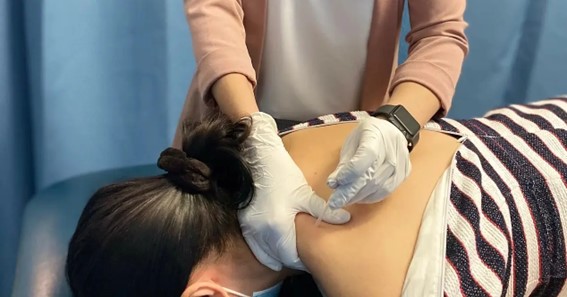Are you suffering from chronic musculoskeletal pain and considering trying a form of therapy that involves the use of needles? If so, you may have come across two techniques called intramuscular stimulation (IMS) and dry needling (DN).
At first glance, these techniques may seem similar, as both involve the insertion of needles into trigger points within the muscle tissue. However, there are some key differences between the two.
In this article, we will explore the similarities and differences between IMS and DN and how they can be beneficial in treating chronic pain.
What is Intramuscular Stimulation?
Intramuscular Stimulation in Edmonton is a form of therapy that was developed by Dr. Chan Gunn, a Canadian physician who was looking for a more effective way to treat patients with chronic pain.
The technique involves the use of acupuncture needles to treat muscle pain and dysfunction and is based on the principles of traditional Chinese medicine. However, the technique has been adapted to focus on the treatment of muscular pain.
During an IMS treatment, fine acupuncture needles are inserted into specific trigger points within the muscle tissue. These trigger points are often areas of increased tension or scar tissue within the muscle that are causing pain or dysfunction.
The needles are then manipulated gently to stimulate the trigger point and promote the healing process.
The goal of IMS is to reduce muscle tension and increase blood flow to the affected area, which can help to alleviate pain and improve function.
IMS at Turning Point Physical Therapy has been shown to be particularly effective for patients with musculoskeletal pain caused by nerve irritation, muscle tension, or scar tissue.
Click Here-What Is Lace Up Shoes?
What is Dry Needling?
Dry needling is a technique that involves the insertion of fine needles into specific trigger points within the muscle tissue.
Unlike IMS, dry needling is not based on the principles of traditional Chinese medicine. Instead, it is rooted in Western medicine and is often used by physical therapists, chiropractors, and other health professionals to treat musculoskeletal pain and dysfunction.
Unlike IMS, dry needling does not involve the manipulation of the needles once they are inserted into the trigger points. Instead, the needles are left in place for a specific period of time to promote the healing process.
The term “dry” refers to the fact that the needles used in the treatment do not contain any medication or solution. The needles are simply inserted into the trigger points within the muscle tissue to help alleviate pain and improve function.
Similarities Between IMS and Dry Needling
Both IMS and dry needling involve the insertion of fine needles into trigger points within the muscle tissue.
They are both designed to alleviate pain and improve function by stimulating the body’s natural healing mechanisms. Both techniques are often used to treat chronic pain and dysfunction.
Differences Between IMS and Dry Needling
One of the main differences between IMS and dry needling is the underlying philosophy behind the technique. IMS is based on the principles of traditional Chinese medicine, while dry needling is rooted in Western medicine.
IMS is based on the belief that the body has energy channels called meridians, which can become blocked and result in pain and dysfunction.
Dry needling, on the other hand, is based on the idea that inserting needles into trigger points can help to release tension and promote healing.
Another difference is the training required to perform the two techniques. IMS physiotherapy in Edmonton requires specialized training and certification, which is typically only available to licensed healthcare professionals such as physiotherapists, chiropractors, and medical doctors.
Dry needling, on the other hand, can be performed by a wider range of healthcare professionals, including physical therapists, chiropractors, and massage therapists.
IMS vs. Dry Needling: Which Is Better?
When it comes to choosing between IMS and dry needling, there is no one-size-fits-all answer. The best approach will depend on the individual patient’s needs and the underlying cause of their pain or dysfunction.
IMS is often recommended for patients with chronic pain and dysfunction that have not responded well to other forms of therapy. It can be particularly effective for patients with musculoskeletal pain caused by nerve irritation, muscle tension, or scar tissue.
Dry needling, on the other hand, is often used as part of a broader treatment plan for patients with musculoskeletal pain and dysfunction.
It can be particularly effective for patients with myofascial trigger points, which are localized areas of muscle tension that can cause pain and dysfunction.
Conclusion
IMS and dry needling are both effective forms of therapy for treating musculoskeletal pain and dysfunction.
While they may seem similar, there are some key differences between the two. When choosing between the two techniques, it is important to work with a qualified and experienced practitioner who can help you determine the best approach for your individual needs.
For more details, you can contain Turning Point Physical Therapy in Edmonton, AB.
